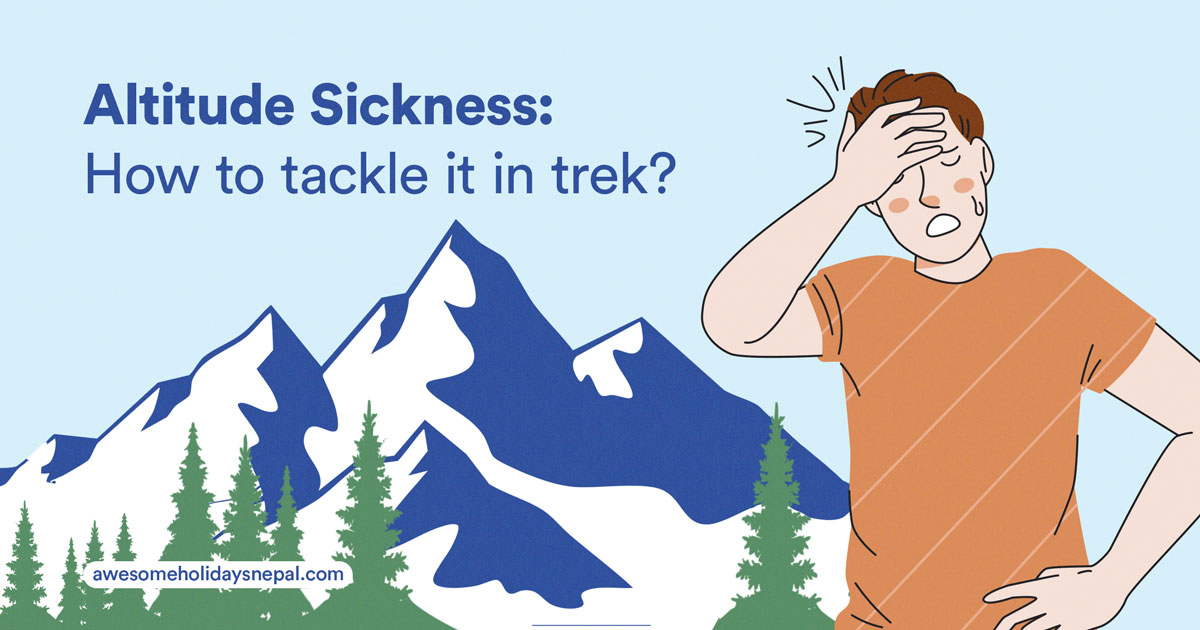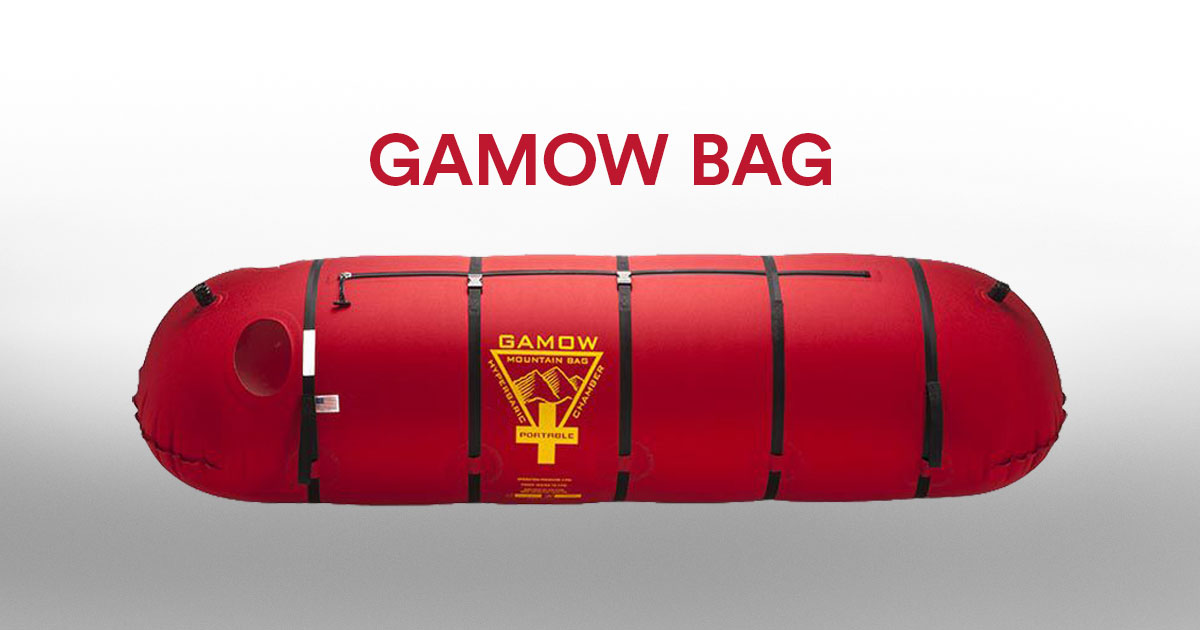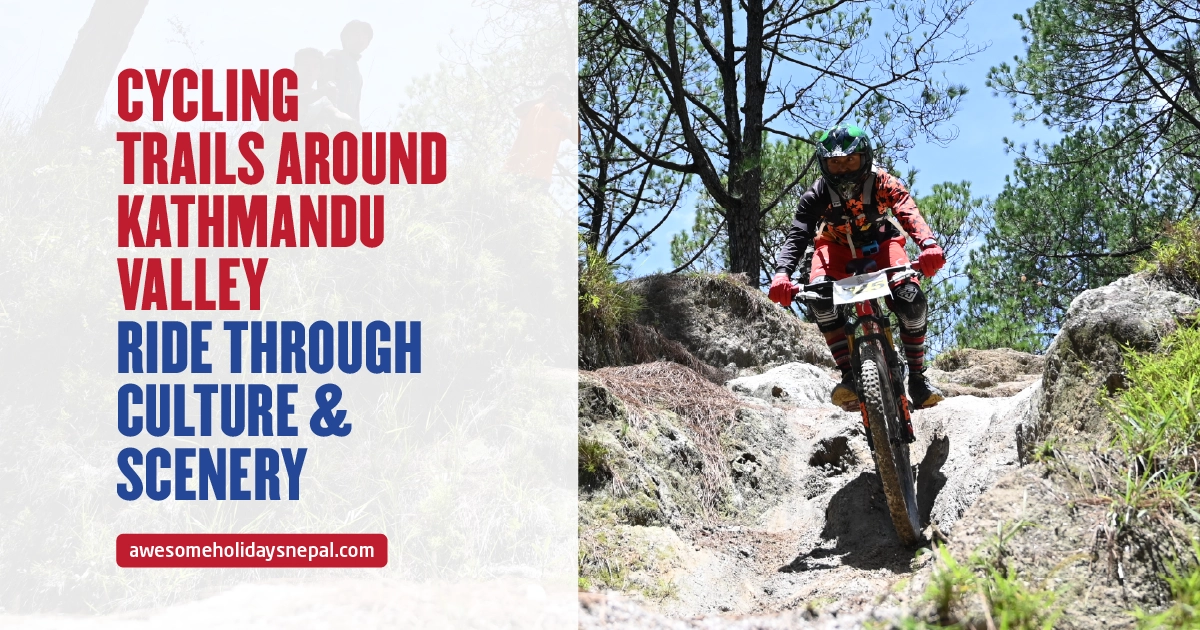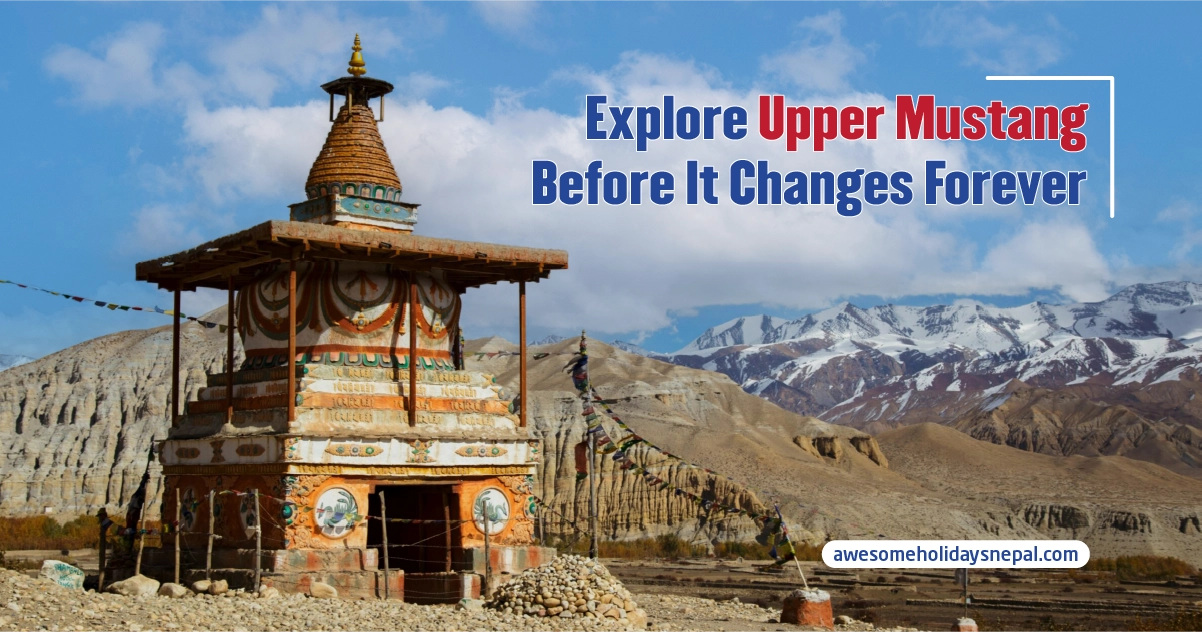What is Altitude Sickness?

If you’re planning a trek to mountain base camps, understanding altitude sickness can save your trip and even your life. Let’s investigate altitude sickness, its causes, symptoms, prevention, and treatment to ensure a safer, high-altitude trekking or mountain travel experience.
Altitude sickness, or Acute Mountain Sickness (AMS), occurs when the body doesn’t have enough time to adjust to the reduced oxygen levels and lower air pressure at higher altitudes. It usually happens when we ascend too quickly, and the body can’t get enough oxygen in the thin air. The good news is that AMS is preventable and treatable, depending on the severity. While mild cases can be managed, severe ones can be life-threatening if not detected early.
Recognizing the symptoms and understanding your body’s response to altitude is crucial for timely treatment and preventing worsening symptoms. For trekkers and mountaineers, knowledge of altitude sickness is vital. A failure to identify the signs in time could have severe, even fatal, consequences.
What Causes Altitude Sickness?
Altitude sickness is primarily caused by rapid ascending to lower oxygen levels at high elevations. The atmosphere gets thinner, and atmospheric pressure decreases. The primary cause of altitude sickness is elevating too fast without acclimatizing.
The altitude sickness generally occurs above 3500 m above sea level. However, the occurrence varies depending on individual endurance and health conditions. Some individuals are more prone to AMS than others.
How long Does Altitude Sickness Last?
The duration of altitude sickness depends largely on the severity of the symptoms and how quickly the individual responds. For mild symptoms, such as a headache, nausea, or dizziness, altitude sickness can improve within 1-3 days if proper rest and acclimatization are followed. It’s crucial to avoid further ascent during this period to give your body time to adjust to the higher altitude.
However, for severe cases, such as High-Altitude Pulmonary Edema (HAPE) or High-Altitude Cerebral Edema (HACE), immediate descent to a lower altitude is necessary. These life-threatening conditions require prompt medical intervention, and recovery may take anywhere from several days to weeks. In all cases, the key to recovery is descending to a lower elevation and allowing the body to properly acclimatize.
Risk Factors for Altitude Sickness
Altitude sickness can affect anyone, but certain factors increase the likelihood of developing it. Here are the key contributors:
Genetics: Some people are naturally more susceptible to altitude sickness.
Lack of Acclimatization: Rapidly ascending without allowing the body time to adjust significantly raises the risk.
Previous Experience: Individuals who have suffered from altitude sickness before are more likely to experience it again.
Altitude Level: The higher you ascend, the greater the risk. Symptoms are more common above 4,000 m.
Pace of Ascent: Rapid elevation gain, especially flying directly to high altitudes, increases the chances of altitude sickness. It is recommended to ascend gradually—no more than 300 meters on an average day above 2,500 m.
Alcohol and Drug Use: Consuming alcohol or certain medications, particularly sedatives and narcotics, can make the body more vulnerable to altitude sickness.
Medical History: Those with a previous record of severe altitude sickness, such as high-altitude pulmonary edema (HAPE) or high-altitude cerebral edema (HACE), are at a higher risk. Chronic diseases and pre-existing conditions like anemia or chronic obstructive pulmonary disease (COPD) can worsen symptoms at high altitudes.
Physical Condition: While overall fitness does not prevent altitude sickness, dehydration, and poor physical condition can worsen its symptoms.
Cold Temperatures: Extremely cold temperatures can cause the narrowing of blood vessels, affecting overall blood circulation and reducing oxygen in the body. People living at a low altitude near sea level have a high chance of catching altitude sickness.
Different Types of Altitude Sickness
There are three main types of altitude sickness:
Acute Mountain Sickness (AMS)
This is the most common and mildest form of altitude sickness. The symptoms include headaches, dizziness, nausea, and shortness of breath.
High-Altitude Pulmonary Edema (HAPE)
This is a severe condition caused by the accumulation of fluid in the lungs. It’s a medical emergency that demands immediate medical treatment. If not identified and treated on time, it can cause death faster than any other form of altitude sickness.
The symptoms include extreme breathlessness, persistent cough, chest tightness, and blue-tinged lips.
High-Altitude Cerebral Edema (HACE)
This is another fetal form of altitude sickness, caused by fluid accumulation in the brain, which causes the swelling of the brain. This condition is also very risky as it causes confusion, loss of coordination, hallucinations, and unconsciousness.
What are the Symptoms of Altitude Sickness?
The symptoms of altitude sickness vary based on its severity. The symptoms of AMS generally appear within the first 12 hours of reaching a high altitude at a fast pace without acclimatizing. Whereas, in severe cases of HAPE and HACE, it usually takes between two and five days.
The symptoms of mild AMS:
- Nausea, vomiting, and headache (the most common symptoms of AMS),
- Loss of appetite,
- Fatigue, even after resting,
- Malaise and irritation (a deep feeling of unwellness)
- Insomnia, loss of sleep
- Dizziness and shortness of breath
- Vision changes (blurry) indicate the most severeness of situation and are caused by the rupture of blood vessels in the retina.
- The severity is worsened by the inability to walk, chest congestion, confusion, hallucination, and fluid buildup in the lungs or brain.
Prevalent Misconceptions on Altitude Sickness
There are some common misconceptions about altitude sickness. Some of them are cracked here.
- Altitude Sickness Only Affects Inexperienced Trekkers: Many people believe that only beginners or unfit individuals suffer from altitude sickness. In reality, even highly experienced climbers and athletes can experience altitude sickness if they ascend too quickly without proper acclimatization.
- Drinking Lots of Water Prevents Altitude Sickness: Staying hydrated is very important during your trek, but drinking excessive water alone does not prevent altitude sickness. Acclimatization, gradual ascent, and proper nutrition are more effective in reducing the risk.
- Physical Fitness Prevents Altitude Sickness: A common misconception is that being physically fit reduces the risk of altitude sickness. Being physically fit can help with endurance, but it does not make someone immune to altitude sickness. The body’s ability to adapt to lower oxygen levels varies from person to person and is not directly linked to fitness.
- Altitude Sickness Only Happens Above 5,000 Meters: Symptoms of altitude sickness can start as low as 2,500 meters (8,200 feet), depending on the individual. Trekkers should be cautious even at moderate altitudes.
- If You Don’t Feel Symptoms Immediately, You’re Safe Some people think that if they feel fine after ascending, they won’t develop altitude sickness. However, symptoms can appear hours later, making it essential to monitor one’s health continuously during high-altitude travel.

Portable Hyperbaric Chamber or Gamow bag
How to Prevent or Treat Altitude Sickness?
Preventing altitude sickness involves proper planning and precautionary measures. to prevent the possible risks, one must understand what altitude sickness is and its causes.
Gradual Ascent: Increase altitude slowly, avoiding gains of more than 300 m per day above 3,000 m
Acclimatization: Spend extra days at intermediate elevations
Hydration: Drink plenty of fluids to stay hydrated
Avoid Alcohol & Smoking: These can exacerbate symptoms
Proper Nutrition: Consume a balanced diet with enough carbohydrates
Medication: Acetazolamide (Diamox) can help in acclimatization
Descending if Necessary: If symptoms worsen, descend immediately
Prevention of AMS
- Visit your doctor for health checkups, information, and advice before your trip.
- The best way to prevent altitude sickness is to ascend slowly and gain an altitude of not more than 300 m in one day. Take an acclimatization rest day for every 1000 m ascent.
- Some experts believe that the intake of a high-carb diet before trekking can reduce the risk.
- Take your first aid items, including medications like acetazolamide (Diamox). It has proved an effective preventive measure at high altitudes. Make sure to consult with your doctor before taking the medicine, as this medicine might have some side effects.
- Salmeterol inhalers open up the bronchial tubes (air passages) in the lungs and make breathing easier.
- It’s always good to do trekking only with an experienced team under expert guides.
- Stay hydrated all the time. This increases the flow of blood in the body.
- Avoid cigarettes and alcohol as you ascend.
One must follow certain health and safety tips to stay safe in the high Himalayas during trekking.

Treatment Options for AMS
The following treatments can help fight against altitude sickness:
- The primary principle to treat AMS is to descend. This is the most effective treatment for severe cases
- Mild AMS can improve with rest and acclimatization
- Carry supplemental oxygen cans/cylinders.
- Take medications like pain relievers, anti-nausea drugs, and acetazolamide.
- Carry a portable hyperbaric bag with the team. The PHB, or Gamow chamber, creates high pressure and simulates lower altitudes.
- Drugs such as nifedipine and dexamethasone are used to treat mild altitude sickness, but not as a prevention measure.
High-Altitude Destinations Prone to Altitude Sickness
Altitude sickness commonly affects travelers visiting high-altitude destinations such as:
- Mount Everest Base Camp (5,364m/17,598ft)
- Kala Patthar (5,644m / 18,519ft)
- Annapurna Base Camp (4,130m / 13,549ft)
- Thorong La Pass (5,416m / 17,769ft), the highest point on the Annapurna Circuit
- Manaslu Circuit (Larkya La Pass – 5,160m / 16,929ft)
- Gokyo Ri (5,357m / 17,575ft)
- Muktinath (3,800m / 12,467ft)
Be Cautious to Prevent the Disastrous Outcome
Altitude sickness is a serious condition that can affect anyone traveling to high elevations. Altitude sickness is preventable with the right precautions.
Understanding its causes, symptoms, and preventive measures is essential for safe travel. By acclimatizing properly, staying hydrated, and recognizing early warning signs, trekkers and travelers can minimize the risks and enjoy their high-altitude adventures safely.
If you’re planning a trek in Nepal, consult a trekking expert and take it slow!
FAQs
Expand AllCan I take Diamox at a high altitude?
Diamox, also known as acetazolamide, is a medication that helps to prevent altitude sickness. It is commonly used by hikers and climbers at Everest Base Camp to prevent altitude sickness
When should I start Diamox before altitude?
Acetazolamide (brand name: Diamox) helps the body acclimatize more quickly. It is usually consumed a day before ascent and continued for 48 hours or until reaching the highest altitude of the trip. However, it should be used under medical guidance, as it may cause side effects like increased urination, tingling sensations, or mild nausea.
When not to use Diamox?
If you know that you have glaucoma, kidney disease, liver disease, low adrenal hormones, COPD, chronic bronchitis, and emphysema, you should not use Diamox. If you have any allergic reaction to acetazolamide, sulfa drugs, other drugs, foods, dyes, or preservatives, you must not use Diamox.
What foods should you avoid while taking Diamox?
Diamox sometimes may irritate the stomach. So, this must not be taken with heavy foods. Its also advised to avoid coffee, spicy food, or alcohol.
Is Diamox safe for kidneys?
Diamox or acetazolamide is not recommended for patients with underlying kidney disease or CKD.
What is the best medication for altitude sickness?
Though acetazolamide should not be taken without a proper prescription, it is widely used to prevent AMS while trekking and ascending.
Who is prone to altitude sickness?
Men are at greater risk of altitude sickness than women, for reasons unknown. It is important to remember that being young and fit doesn’t reduce your risk, and just because you haven’t experienced altitude sickness in the past doesn’t mean you are immune to the condition during future climbs.
What are the symptoms of AMS?
In most cases, symptoms are mild. Some symptoms of AMS are difficulty breathing, sleeping, dizziness, fatigue, headache, loss of appetite, nausea or vomiting, and chest tightness or congestion.
What is the best over-the-counter medicine for altitude sickness?
You might want to take medications like acetazolamide, commonly called Diamox before heading to high altitudes. These medications can help prevent or reduce symptoms.
What's altitude sickness?
Altitude sickness, or acute mountain sickness (AMS), occurs when the body struggles to adapt to low oxygen levels at high altitudes, leading to symptoms like headache, nausea, dizziness, and fatigue.
At what altitude does altitude sickness start?
It typically begins above 2,500 meters (8,200 feet), but susceptibility varies from person to person.
How common is altitude sickness?
It affects about 25–50% of people traveling above 3,000 m (9,800 ft) without proper acclimatization.
Can altitude sickness kill you?
Yes, if left untreated, severe cases can develop into high-altitude pulmonary edema (HAPE) or high-altitude cerebral edema (HACE), both of which can be fatal.
Will Dramamine help altitude sickness?
No, Dramamine (used for motion sickness) does not prevent or treat altitude sickness. Diamox (Acetazolamide) is the recommended medication.
Related blog posts
Discover a choice of tourist destinations loved by most of our visitors. Whether you're on a jungle safari to spot rare animals or walking through a world heritage site, these well-planned itineraries cover the major highlights of Nepal.





